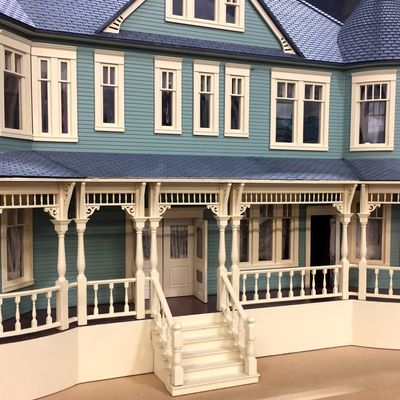
Spoilers ahead for the Sharp Objects finale.
As if Amma’s eerie fascination with her dollhouse wasn’t enough to make Sharp Objects viewers cringe, now we know evil was buried in the floors all along, hiding Wind Gap’s darkest secrets inside the magnificent replica of her family’s Victorian mansion. Throughout the series, Camille’s (Amy Adams) half-sister has led a double life: She’s a perfect momma’s girl at home, and when she’s skating around town, she’s the local mean girl who manipulates all kinds of mayhem. But the Sharp Objects finale ends with a shock of shocks, at least for those who haven’t read Gillian Flynn’s novel: Amma is the real killer, not Adora, and she was collecting her victims’ teeth to recreate her mother’s prized ivory bedroom floor.
“When you realize that she was killing them to have the teeth to make the floor — how crazy, you know?!” director Jean-Marc Vallée told Vulture. “And then she killed the new friend! Probably to have more teeth to finish her piece of art! Her obsession with teeth, their obsession with perfection, it’s destroying them. This image of perfection is also a reflection of destruction.”
Flynn told Vulture just seeing the dollhouse she had conjured for her 2006 novel was “gut-wrenching,” but the reveal of the tooth inlaid-floor hit her hardest. “For me, obviously knowing how it was going to end, I felt my stomach clench, too,” she said. “There’s something about reading and writing something that’s very different from actually seeing it as an audience member. I felt unsettled, queasy, frightened. I was the audience member going, Don’t look in the dollhouse! Don’t look in the dollhouse! and also at the same time, Look in the dollhouse! Look in the dollhouse!”
It was production designer John Paino’s painstaking job to make sure everything about Amma’s dollhouse was perfect for filming, including the floors that Amma made from the teeth she pulled from Ann, Natalie, and (gasp!) her new friend Mae. Prop makers used plastic baby teeth to create the floor, which Camille discovers in the closing moments of the finale, and Paino says it required meticulous work to get it just right.
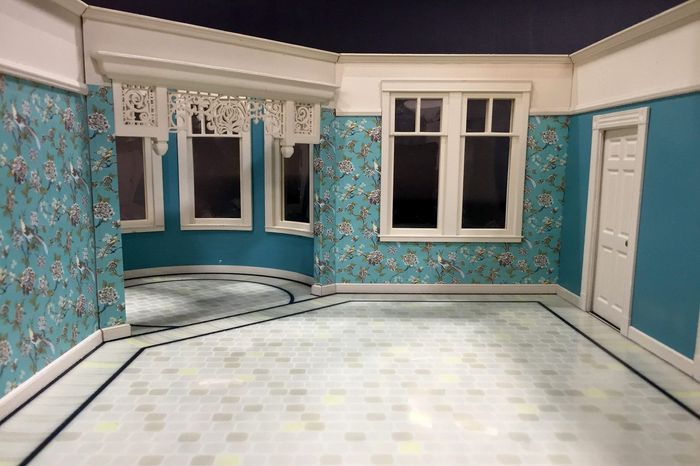
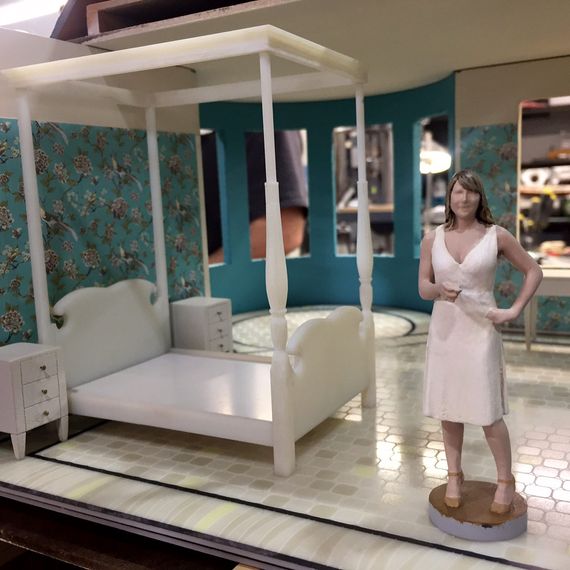
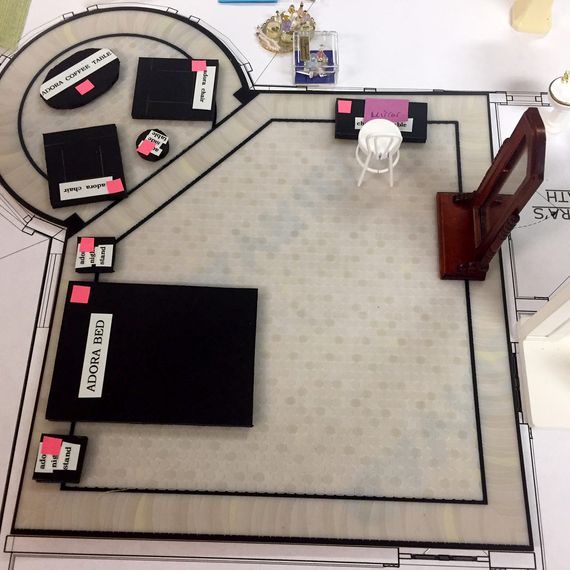
“We shaved them down on the backs and a little bit on the top, so it would seem like she had made an attempt to make them resemble the tusk process, because the floor looks like if there’s walrus tusks or whale tusks or elephant tusks,” Paino said of the prop teeth. “She made this fabulous dollhouse, so she would have probably gone to great lengths to sand them down and make them almost unnoticeable. There was a lot of back and forth about how far to go with camouflaging the teeth. We ended up putting one or two under the bed to make it more prevalent, so you could see them.”
Horrifying floor aside, the dollhouse is pretty spectacular: It has practically everything you see in Adora’s (Patricia Clarkson) house, from the hand-painted wallpaper, to paintings hanging on the walls, to a miniature stereo system like the one Alan (Henry Czerny) plays constantly to tune out his miserable life.
“This family, this mother, and their image of perfection, this is how they live in this crazy house,” Vallée said. “And then there’s a reproduction of this crazy house? The house has a dollhouse? They pay for their daughter to play with this giant dollhouse because they’re so in love with the world they’re creating without realizing that this is a horror film. It is a horror house.”
Building the dollhouse was a meticulous process that production undertook while simultaneously building the interiors of the mansion at Occidental Stages in Los Angeles. “Normally, you’re deciding on the colors and the paint and ordering furniture — which takes time — and having things especially made, like paintings and everything to dress the house. But in this case, it was doubly hard because we were creating all of these things while also having to build the same for a dollhouse,” Paino said. “We went to people who make dollhouses outside the industry, and usually it takes two to three years to build something like that. We had two-and-a-half to three months.”
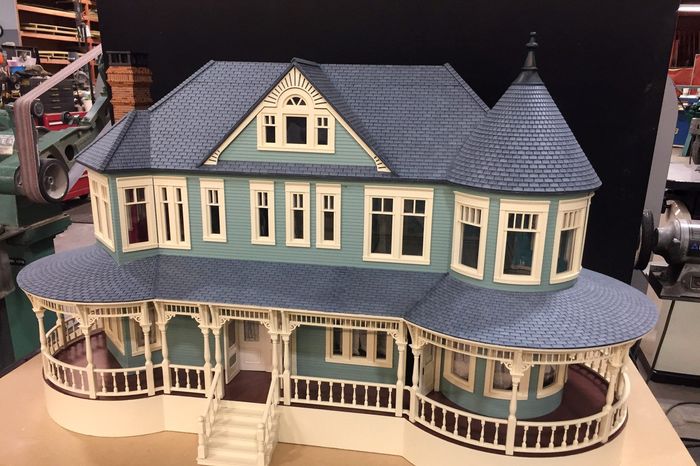
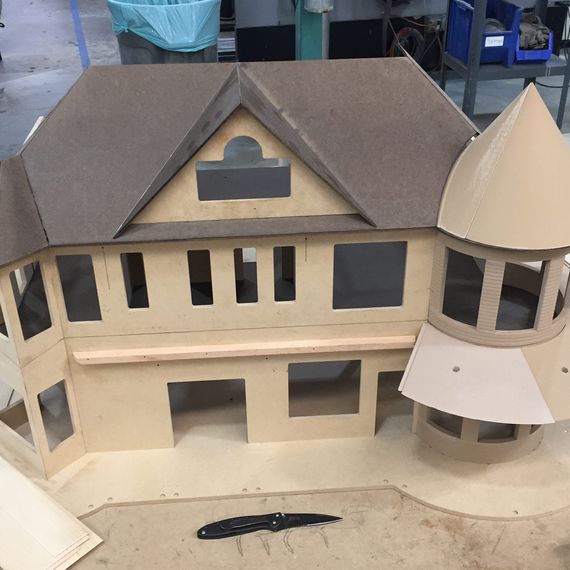
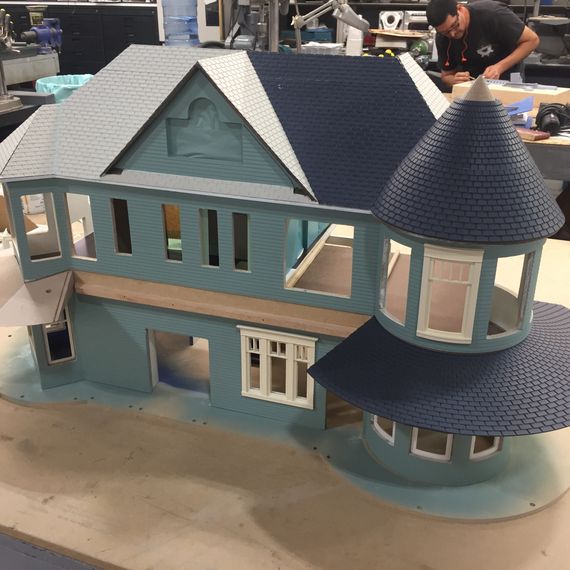
To begin, the house in Redwood Valley, California that was used for exterior shots was surveyed, and then three mockups were built as the team tried to figure out which was the best size for filming. “It was kind of like Goldilocks. One was too big, one size was too small, and one was just right,” Paino said. “We needed it to be big enough to be shootable, but not so big that you can’t get around it and it feels strange in the house it’s so big.”
In the end, the dollhouse was built at three-quarter-inch scale and stood at five-feet wide and three-feet tall. “Our dollhouse was in a scale that was great for filming, but there was no pre-made furniture for it,” Paino said. “Everything had to be made from scratch. Jean-Marc Vallée had to think about how exactly he wanted to shoot it, so that it could open up in certain ways when Amma is showing it off in various episodes. But sometimes we had to adjust for changes if things were re-written, like they re-wrote a part so they could peer through a window. The whole process was a nail biter.”
The shell of the house was contracted out to a model shop, while all fabrics were hand-sewn, and a few painters were hired to match the same colors inside Adora’s mansion. Three or four prop makers built all of the furniture, cutting every stick of wood by hand. “The shingles on the roof, we got those measured. They have to be made by hand. You can’t get those at the dollhouse store,” Paino said. “There were maybe 1,000 shingles that have to be made, weathered, and painted. It was very time-consuming.”
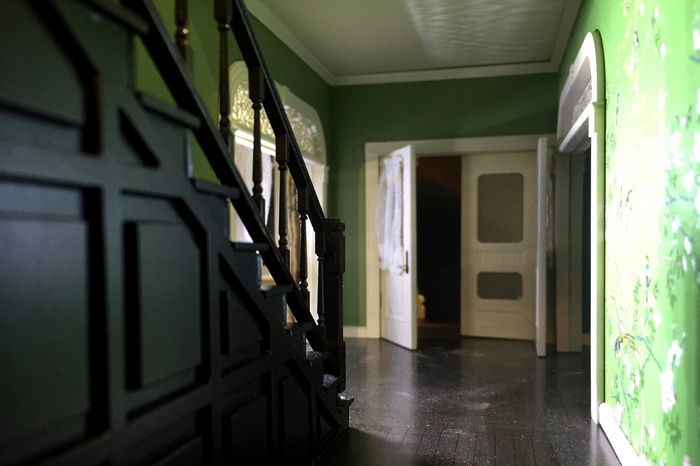
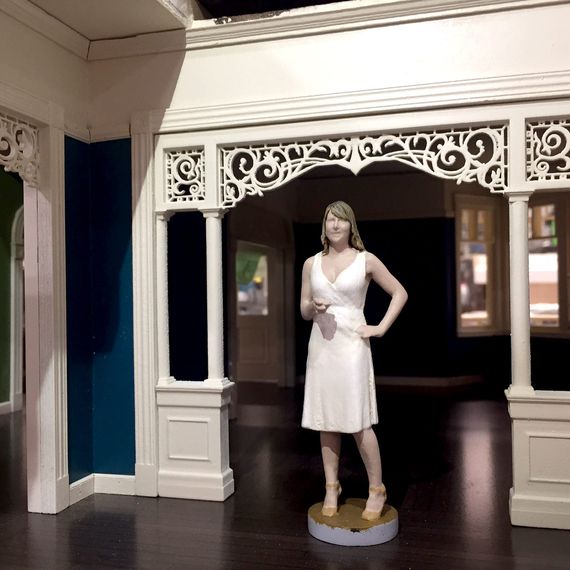

“Our [property] master Hope M. Parrish and her team did an amazing job and our set decorator Amy Wells was fantastic,” he added. “Amy needs time to get samples and look at different types of furniture, see what wallpaper is available. Some of our wallpaper was extremely exclusive and hand-painted and came from overseas. So the person making the dollhouse was asking things like, When are you going to tell me what the couch looks like? And it’s one of those things where you say, Well, we’re figuring it out. This was a very complicated prop from that perspective.”
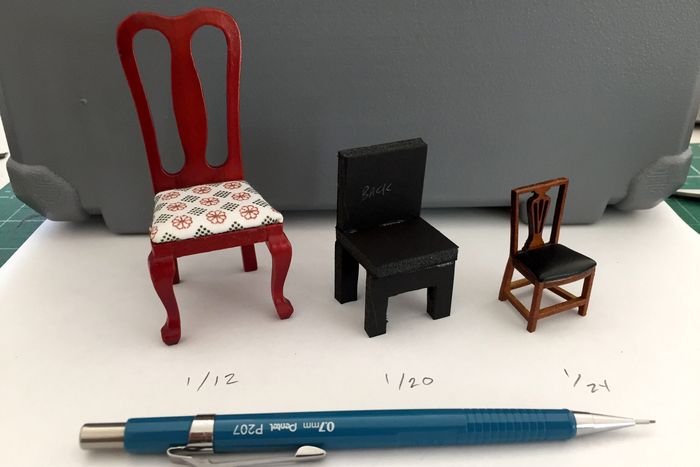
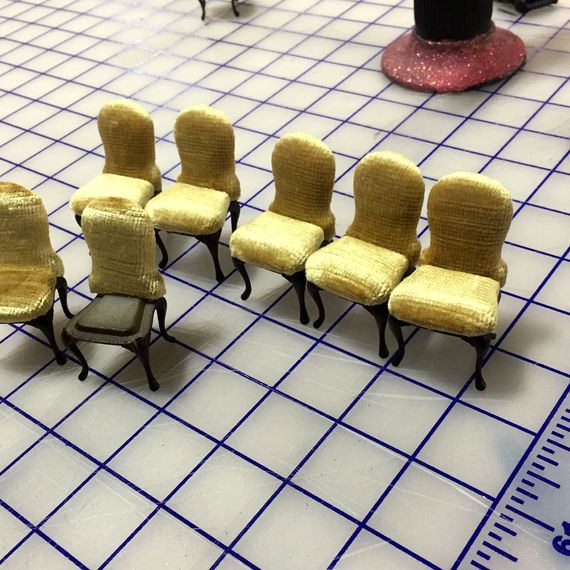
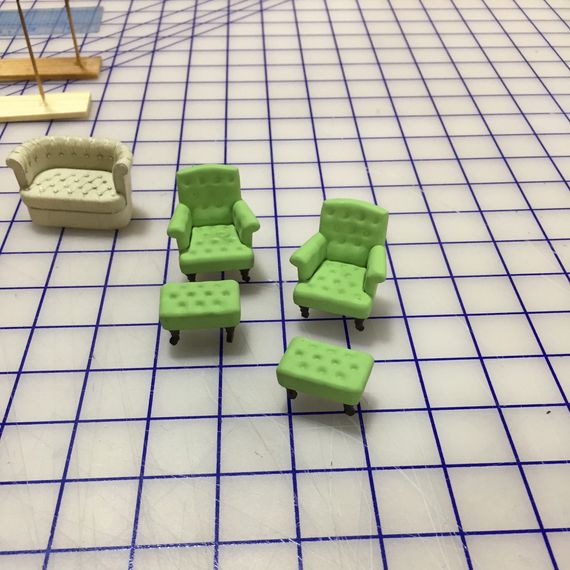
Adora’s bedroom was the most important part to feature — especially for its role in the finale — and designers gave it the most space. Everything was replicated, from artwork to pillows to tchotchkes. “Obviously there are some things that we might not put in — not every piece of furniture — because when you reduce it, you reduce it in scale and play a little bit with it,” Paino said. “But we really tried to make it as true to life as possible.”
Doll figures for every member of the family were made, too. (Even Alan.) While furniture was built for the entire house, eagle-eyed viewers may have noticed in the first episode that Camille’s bedroom remained empty. “We made furniture for all of it,” Paino said. “But Jean-Marc may have taken a few pieces of furniture out to emphasize that Camille is not on her sister’s radar and Adora has very mixed feelings about Camille. Adora helped her make the house so perhaps they didn’t spend as much time on that.”
The “sturdy” dollhouse is surprisingly easy to move: The top section, as seen in the show, is easily removable. “We had a special crate, like a shipping crate, that we had put it in because God forbid if anything happened to it,” Paino said. “But if someone trips and it falls, it’s not going to break into a million pieces. It was very protected. It was extremely expensive to make.”
Paino declined to provide an exact construction cost, but said the dollhouse was so labor-intensive it landed somewhere in the “six figures.” An incomplete second dollhouse was also built because in the book, Camille smashes it while looking for proof that Amma is the killer. But Flynn and showrunner Marti Noxon left that detail out of their scripts, so the scene was never filmed.
A year after Sharp Objects production ended, Amma’s dollhouse is now safely tucked away at Fake Studio, the post-production house in Montreal where the show was completed. “The most amazing thing to me is that it really looks like the actual set inside and out,” Paino said. “When it’s inside the house, it’s a little creepy. It’s a house in a house. It’s a little strange.”
Hillary Kelly contributed reporting to this article.

